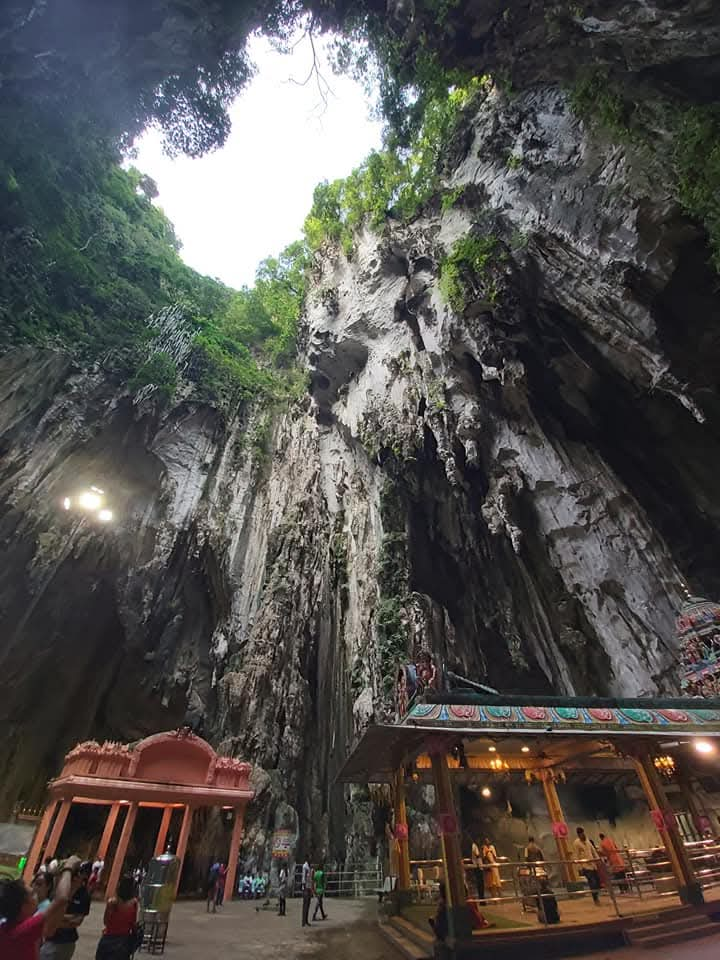
- Bhanuka
- Travel
- Hits: 507
Batu Caves vs. Fort Canning Tunnel: A Visual Feast for Photographers
- Bhanuka
- Travel
- Hits: 507
Batu Caves vs. Fort Canning Tunnel
If you're a travel photographer or an Instagram enthusiast looking for iconic photography spots in Southeast Asia, Batu Caves in Kuala Lumpur and Fort Canning Tunnel in Singapore are two must-visit locations. Though vastly different in history and aesthetics, both sites offer unique backdrops that captivate the lens. Let’s dive into what makes each location stand out and how they compare in terms of photographic appeal.
Overview of the Locations
Batu Caves – A Cultural and Architectural Marvel
Located just north of Kuala Lumpur, Batu Caves is a limestone hill with a series of caves and Hindu temples. The most iconic feature is the 272-step staircase leading up to the Temple Cave, flanked by a towering 43-meter golden statue of Lord Murugan.
Fort Canning Tunnel – Singapore’s Hidden Green Gem
Tucked within Fort Canning Park, the Fort Canning Tree Tunnel (also known as the spiral staircase tunnel) is a lesser-known yet highly photogenic spot in Singapore. The circular staircase, covered in lush ivy and leading up to a canopy of trees, provides a unique natural frame that has become a favorite for both professional photographers and social media users.

Photographic Style and Aesthetic
Batu Caves: Bold, Vibrant, and Monumental
Batu Caves is ideal for wide-angle shots, showcasing the colorful staircase, intricate Hindu sculptures, and dramatic limestone cliffs. The vibrant colors of the steps—painted in rainbow hues—contrast beautifully with the earthy tones of the cave interior and the gold of the Murugan statue.
Best for:
- Cultural photography
- Architecture and monument shots
- Wide dynamic range captures
Fort Canning Tunnel: Minimalist, Lush, and Whimsical
This location is best known for its symmetry and natural framing. The circular stairwell surrounded by greenery creates a soft, ethereal composition that feels like a hidden portal. It’s particularly popular for portrait photography, fashion shoots, and creative storytelling.
Best for:
- Portraits with a natural backdrop
- Nature-meets-urban compositions
- Instagram-style minimalist photography
Lighting and Timing
Batu Caves
- Best time: Early morning (to avoid harsh shadows and crowds)
- Lighting tips: Natural light works best; consider golden hour for softer tones
- Challenges: Midday light can cause overexposure due to bright concrete and limestone
Fort Canning Tunnel
- Best time: Late morning to early afternoon (when the light filters through the trees)
- Lighting tips: Avoid rainy days, as the tunnel can get slippery and dark
- Challenges: Backlighting can be tricky—use HDR or post-editing for balance

Accessibility and Convenience
Batu Caves
- Location: Easily accessible by train (KTM Komuter line) from KL Sentral
- Entry: Free (some cave temples may charge a small fee)
- Footwear: Be prepared to climb 272 steps—comfortable shoes are a must
Fort Canning Tunnel
- Location: Within Fort Canning Park, near Dhoby Ghaut MRT station
- Entry: Free and open to the public
- Footwear: Casual or light walking shoes are sufficient
Social Media Potential
Batu Caves
- Often tagged with #BatuCaves, #LordMurugan, and #KLphotospot
- Common on travel blogs, reels, and cultural photography accounts
- Visual storytelling opportunities with local traditions and festivals
Fort Canning Tunnel
- Highly popular with hashtags like #FortCanningTunnel, #HiddenSingapore, and #TreeTunnel
- Frequently used for pre-wedding photoshoots and influencer posts
- Strong aesthetic appeal on minimalist and nature-focused Instagram feeds
Final Verdict: Which One Should You Choose?
Choose Batu Caves if you love bold cultural landmarks, vivid colors, and dramatic architecture. It’s ideal for those wanting to capture the essence of Malaysian heritage.
Choose Fort Canning Tunnel if you prefer subtle, storybook-like visuals with lush greenery and unique angles. It’s perfect for intimate portraits and nature-urban fusion photography.
Why choose one when you can visit both? Combine a trip to Malaysia and Singapore for a diverse portfolio that showcases the rich cultural and natural beauty of Southeast Asia.

